Hoops Rumors is in the process of taking a closer look at each NBA team’s current roster situation, evaluating which clubs still have some moves to make and which ones seem most prepared for training camp to begin.
This series is meant to provide a snapshot of each team’s roster at this time, so these articles won’t be updated in the coming weeks as more signings, trades, and/or cuts are made. You can follow our roster counts page to keep tabs on teams’ open spots as opening night nears.
We’re continuing our pre-camp Roster Snapshot series today with the Central Division. Let’s dive in…
Chicago Bulls
- Players on guaranteed standard contracts: 14
- Players on non-guaranteed standard contracts: 1
- Players on Exhibit 10 contracts: 3
- Players on two-way contracts: 2
- Players who have reportedly reached contract agreements: 1
- E.J. Liddell (Exhibit 10?)
The Bulls could set their 21-man training camp roster by officially signing Liddell, who is believed to have agreed to an Exhibit 10 deal. However, there are still questions about what their 18-man regular season roster will look like, even if Chicago doesn’t make any preseason trades.
The Bulls have just 14 players on guaranteed standard contracts, leaving the 15th spot open for a roster hopeful like Bitim, Horton-Tucker, or Lofton. The club also has a two-way slot available.
While Horton-Tucker isn’t eligible for a two-way contract, Domask, Lofton, and Liddell are. Bitim would be too, but he can’t be converted directly to a two-way deal since he’s not on an Exhibit 10 contract — he’d need to be cut and then re-signed after clearing waivers.
Cleveland Cavaliers
- Players on guaranteed standard contracts: 11
- Players on non-guaranteed standard contracts: 3
- Sam Merrill, Craig Porter (partial guarantee), Tristan Thompson
- Players on two-way contracts: 3
- Players who have reportedly reached contract agreements: 1
- Darius Brown II (Exhibit 10)
The Cavaliers‘ 11 players on fully guaranteed salaries represents the lowest total of any NBA team. But Merrill and Porter are locks to be on the regular season roster, so at least 13 standard spots are accounted for, and the team reportedly doesn’t intend to carry a 15th man into opening night for financial reasons.
Presumably, Thompson will open the season as the 14th man, but that’s not set in stone, since he’s not owed any guaranteed money. The Cavs could still bring in another veteran to challenge for that job.
Even after signing Brown, Cleveland will have three open spots on its 21-man roster, so more Exhibit 10 signings are likely around the corner too.
Detroit Pistons
- Players on guaranteed standard contracts: 13
- Players on non-guaranteed standard contracts: 1
- Players on Exhibit 10 contracts: 2
- Players on two-way contracts: 2
- Players who have reportedly reached contract agreements: 2
- Aaron Estrada (Exhibit 10), Dereon Seabron (Exhibit 10)
With over $10MM in cap room still available and only 13 players on guaranteed contracts, the Pistons are one of the NBA’s top candidates to make a move impacting their regular season roster in the next month.
That’s not a lock though. If they hang onto Reed, as expected, the Pistons will have the required 14 players for opening night. And if they want to maximize their remaining cap room in order to accommodate as many potential in-season trade opportunities as possible, they may be reluctant to add even a minimum-salary player as a 15th man.
While it’s an open question whether or not Detroit will fill out its standard 15-man roster, it’s safe to assume the team will carry a third two-way player into the season. We’ll see whether McCoy, Smith, Estrada, and/or Seabron get a chance to compete for that spot or whether the Pistons have any other specific targets in mind. For what it’s worth, the club could add one more player to its 21-man preseason roster even after officially signing Estrada and Seabron.
Indiana Pacers
- Players on guaranteed standard contracts: 12
- Players on non-guaranteed standard contracts: 4
- Kendall Brown, James Johnson (partial guarantee), Cole Swider, James Wiseman (partial guarantee)
- Players on two-way contracts: 3
- Players who have reportedly reached contract agreements: 3
- Josiah-Jordan James (Exhibit 10), Tyler Polley (Exhibit 10), Keisei Tominaga (Exhibit 10)
The partial guarantees held by Johnson and Wiseman will give them the upper hand to join the Pacers‘ dozen players on fully guaranteed contracts as part of the standard opening night roster. That would leave Brown and Swider vying for the 15th spot, with no guarantee that Indiana – within spitting distance of the luxury tax line – would retain either one.
The Pacers, who are already carrying 19 total players, wouldn’t be able to finalize all three of their reported Exhibit 10 deals without waiving someone. That math suggests that at least one of those Exhibit 10 recipients – and maybe more than one – will be cut shortly after he signs, with Indiana rotating players in and out of those back-end roster spots.
Milwaukee Bucks
- Players on guaranteed standard contracts: 14
- Players on non-guaranteed standard contracts: 1
- Andre Jackson (partial guarantee)
- Players on Exhibit 10 contracts: 3
- Players on two-way contracts: 3
The Bucks have a hefty projected tax bill to consider, but it still doesn’t make sense to waive Jackson, given that half of his $1.89MM salary is guaranteed. He’ll make that money whether or not he opens the season on the roster, so it looks like Milwaukee will carry a full 15-man squad into opening night.
With all 21 preseason roster spots filled, including all three of their two-way slots, the Bucks don’t need to make any changes before camp begins. Unless one of the camp invitees has a huge fall and pushes one of the current two-way players out, I’d expect Milwaukee’s only preseason roster moves to consist of signing and waiving Exhibit 10 players.
Previously:


 Speaking of Duarte, he was a throw-in salary-matching piece in the Kings’ biggest move of July, a sign-and-trade deal for six-time All-Star
Speaking of Duarte, he was a throw-in salary-matching piece in the Kings’ biggest move of July, a sign-and-trade deal for six-time All-Star 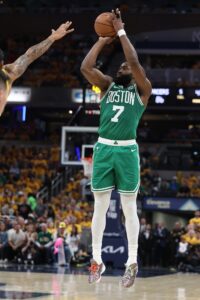 Boston Celtics (58.5 wins):
Boston Celtics (58.5 wins): 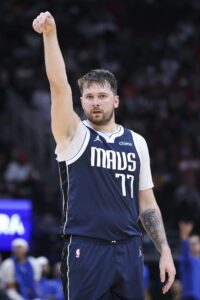 Dallas Mavericks (49.5 wins): 78.0%
Dallas Mavericks (49.5 wins): 78.0% Los Angeles Clippers (39.5 wins):
Los Angeles Clippers (39.5 wins): 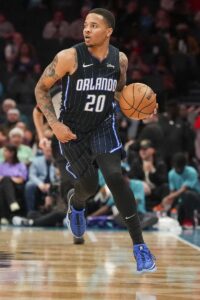 Sure, there were still holes in his game. He rarely attempted long-range shots, converting just 31.0% of his 1.5 three-point attempts per game — and that represented the most accurate mark of his career. While he had a good deal of success on mid-range looks, having a guard who can’t space the floor isn’t ideal for a team’s offense.
Sure, there were still holes in his game. He rarely attempted long-range shots, converting just 31.0% of his 1.5 three-point attempts per game — and that represented the most accurate mark of his career. While he had a good deal of success on mid-range looks, having a guard who can’t space the floor isn’t ideal for a team’s offense.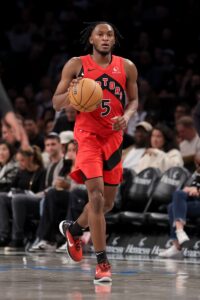
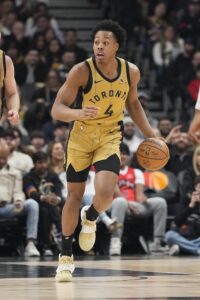 Barnes’ five-year, maximum-salary rookie scale extension is essentially the same deal that his fellow 2021 lottery picks
Barnes’ five-year, maximum-salary rookie scale extension is essentially the same deal that his fellow 2021 lottery picks  Acquired the Timberwolves’ 2027 second-round pick; either the Pacers’ or Wizards’ 2029 second-round pick (whichever is least favorable); and the Knicks’ 2030 second-round pick from the Knicks in exchange for the draft rights to
Acquired the Timberwolves’ 2027 second-round pick; either the Pacers’ or Wizards’ 2029 second-round pick (whichever is least favorable); and the Knicks’ 2030 second-round pick from the Knicks in exchange for the draft rights to  Besides acquiring Avdija, the only other major addition the Blazers made this offseason was drafting center
Besides acquiring Avdija, the only other major addition the Blazers made this offseason was drafting center